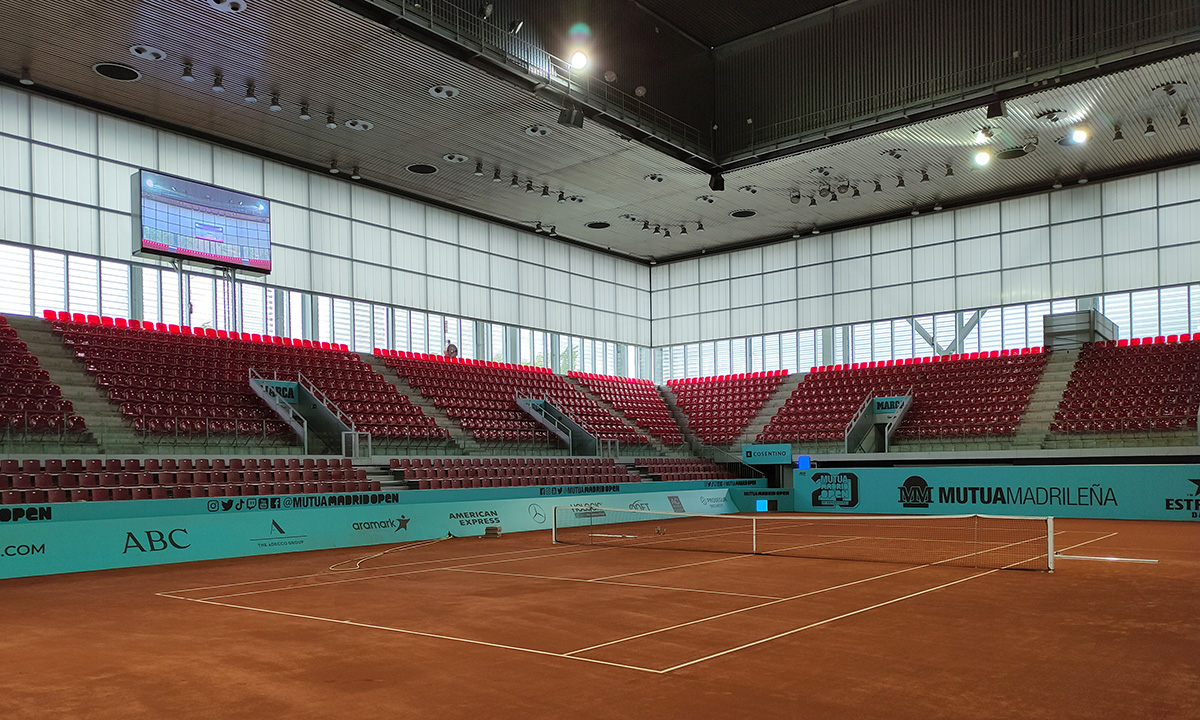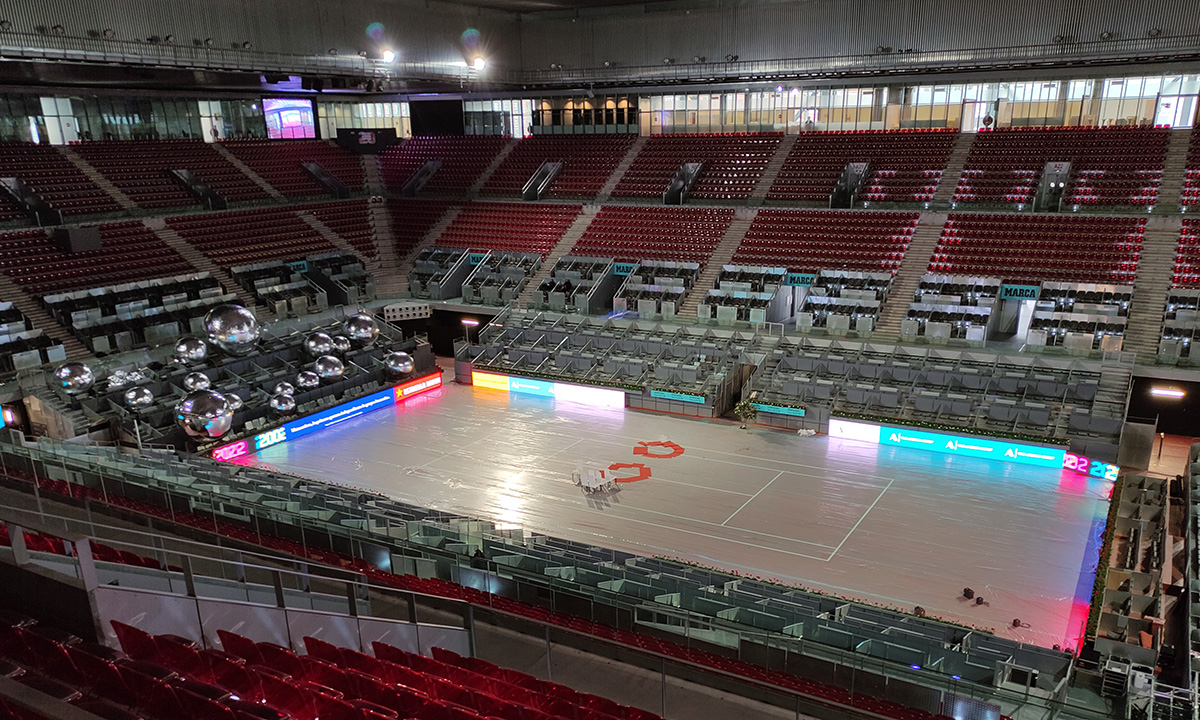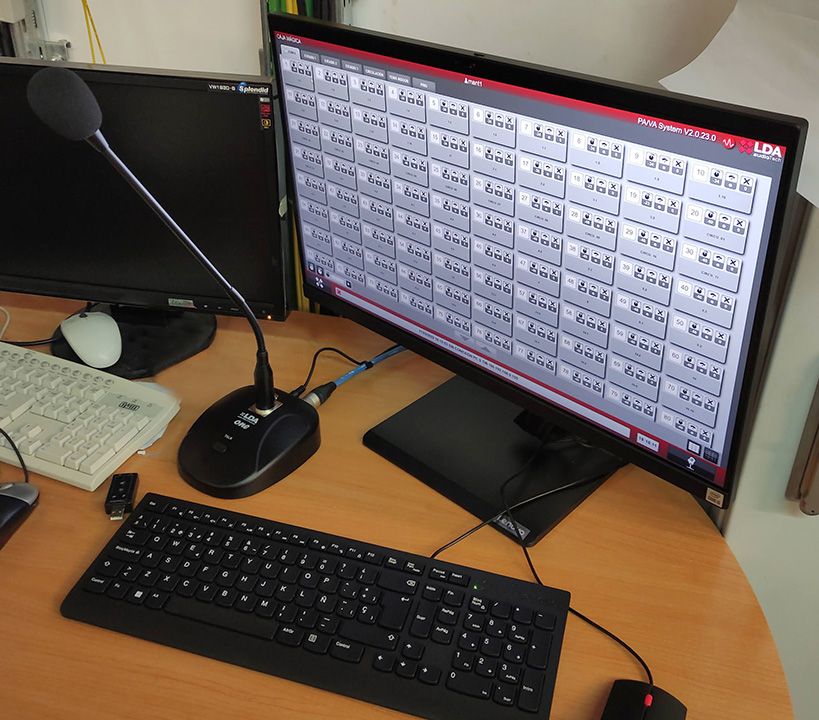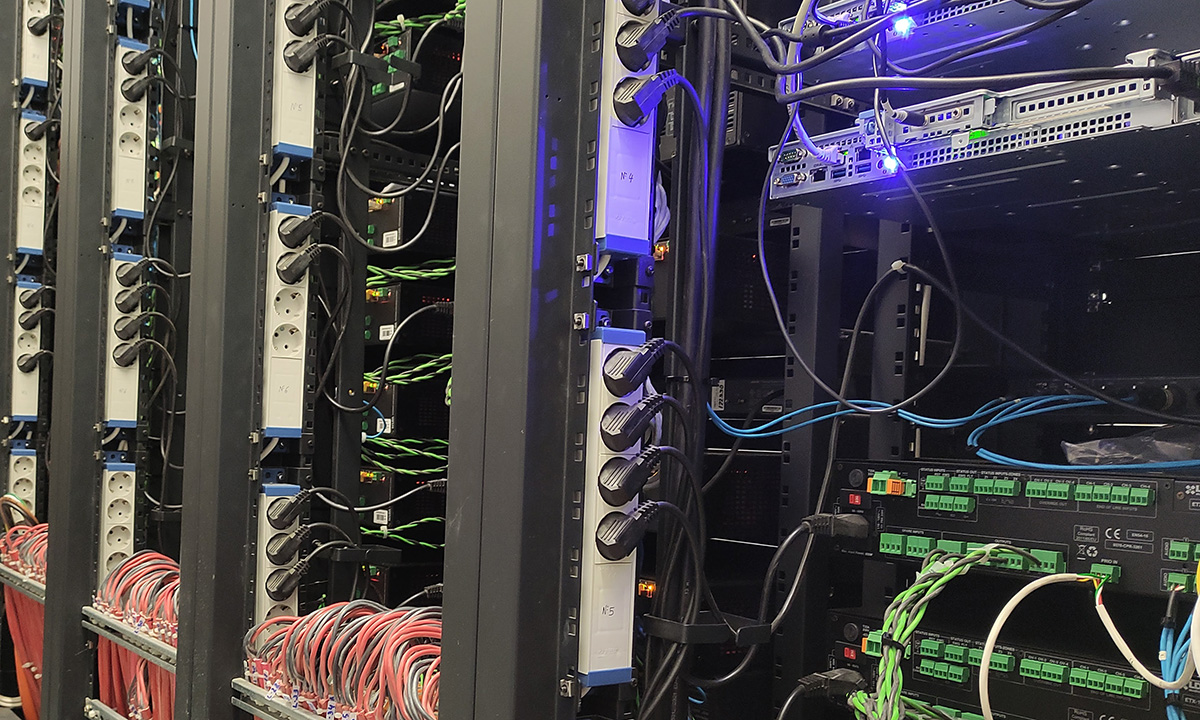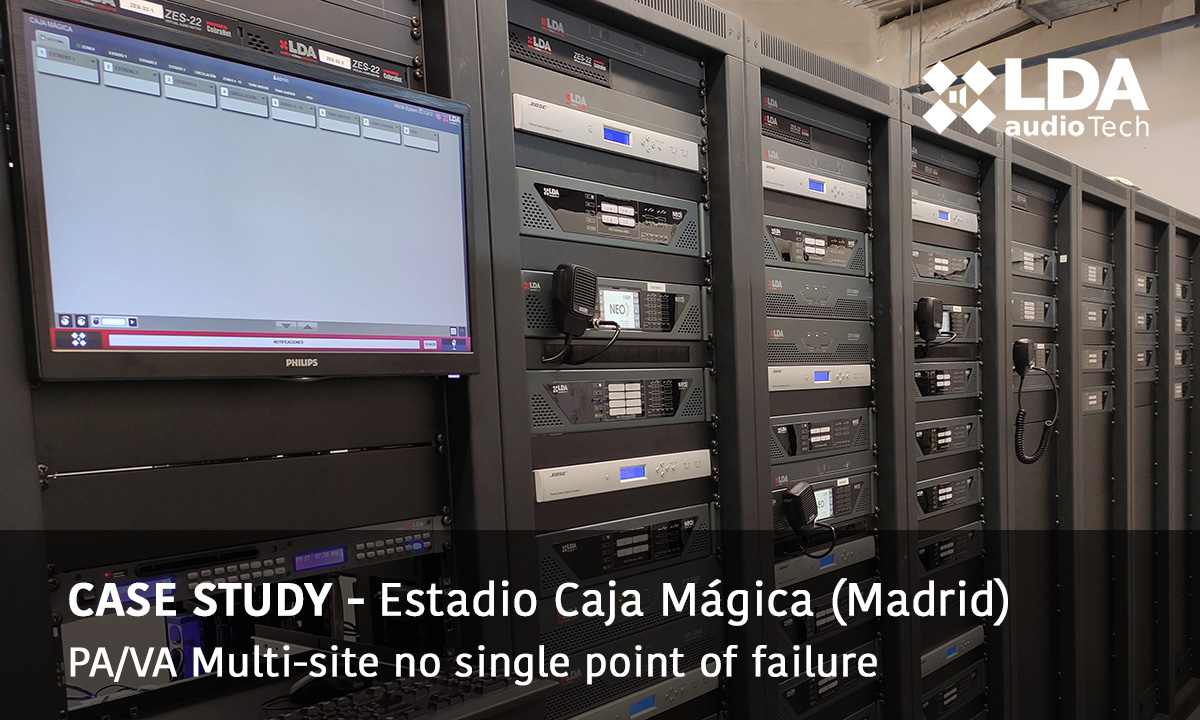
13 Apr Case Study: Caja Mágica Stadium in Madrid – Renovated multi-site system with NO SINGLE POINT OF FAILURE
Overview
The Caja Mágica is one of the most innovative multidisciplinary buildings in the world. The venue is home to the tennis Mutua Madrid Open every year since 2009 and hosts several sporting events (Davis Cup, Handball World Championships, European Volleyball League, international basketball games, World Padel Tour, World Judo, and other world championships), business events, musical events (MTV Awards, Mad Cool, Download, and mass concerts) and film shoots for adverts, film and TV.
Built in steel, wood and glass, the complex was designed by French architect Dominique Perrault.
The name “Caja Mágica” refers to the stadiums’ enclosure, which gives them a dynamic and changing appearance.
The Caja Mágica has three clay courts with movable roofs. The Manolo Santana Centre Court has a capacity of 12,500 spectators. Courts 2 and 3 have 3,500 and 2,500 seats, respectively.
It is a large venue with an important flow of visitors. There are different sound zones and each of them needs to be controlled individually and coordinated with the others.
The Caja Mágica’s public address and voice alarm system was originally installed by system integrator Ruybesa in 2008 using LDA equipment and Bose loudspeakers.
In 2021, the Caja Mágica requested a renewal of the system and the team Ruybesa – LDA was again awarded in a public tender to undertake this job.
Challenge
The goal was to implement a robust state-of-the-art PA/VA multi-site system with no single point of failure (SPOF) to operate in the whole venue.
To ensure the non-existence of a SPOF in a system, all its components had to be usually redundant, creating a high availability system, which guarantees correct operation even in the case of failure of any of its components.
Caja Mágica required to maintain all the advanced functions of its public address system and to upgrade them with new generation systems incorporating the latest state-of-the-art technology.
In addition to the central requirement, i.e. a redundant “no single point of failure” solution, the system interfaces had to be improved by including installation drawings and equipment display on them.
The new system had to be integrated with the use of existing Bose processors for PA sound in the stadiums, which use Bose loudspeaker boxes. This way, the PA-BGM (public address) and VA (evacuation) operations would be managed under the same unified system.
The project’s requirements involved the simultaneous management of 5 public address and voice evacuation areas: 3 for the stadiums, with duplicated and redundant control systems, and another 2 for the circulation area (outside the Caja Mágica) and for the Tenis Indoor annex building.
The control systems of the 3 stadiums were to be duplicated, but not the amplifier units, so that there would be automatic switching in their operation and the service would not be affected at any time despite a possible failure.
Solution
The system has been designed to support the matrix flow of audio signals between sources and destinations to provide high-quality audio in each zone.
By using a multi-tasking panel and the user-friendly LDA SIME software, it allows the operator to route or direct the message coming from either the microphones or the players in the required area.
The complete system consists of two partially centralised LDA subsystems, each of which is in a separate rack placed in different locations around the venue.
For the Caja Mágica, LDA Audio Tech has designed an architecture with no single point of failure.
It is a multi-site system with:
- several NEO-8060 units with their NEO Extensions,
- and a control station provided with a ZES-22 digital converter and microphone.
In each site there is also a ZES-22 connected to the whole system, which receives the audio from the control station as alternative zones and then sends these alternative zones via analogue audio. This analogue signal reaches the NEO Extensions directly via the priority channel.
The entire architecture is controlled by the LDA SIME management software, which is able to configure the different zones to achieve a fully redundant and SPOF-free system.
From SIME we can control all the NEO Extensions installed in two ways:
- Zones A – B – C ⇒ Audio over network to NEO
- Zones A’ – B’ – C’ ⇒ Audio over network to ZES-22 converters ⇒ NEO Extension priority analogue inputs
How do the audio channels flow in this system?
Public Address (PA) audio reaches the NEO Extensions through its analogue audio inputs.
💡 A Bose sound processor has been installed so that this signal arrives at the NEO Extensions filtered and equalized according to Bose speakers’ DSP requirements.
Audio Evacuation (VA) reaches NEO Extensions units via Flexnet loop link to comply with EN 54 standard.
INSTALLED EQUIPMENT
Hardware:
- 5 NEO-8060 all-in-one EN54-certified PA/VA system
- 5 NEO-8250E Extension
- 19 NEO-4500E Extension
- 22 NEO-4500LE Extension
Software:
- SIME Control, for PA system operation
- SIME Calendar, for automatic event activation
- SIME EVAC, for full VA management
Result
The public address and voice evacuation system designed by LDA Audio Tech for the Caja Mágica eliminates any SPOF in the whole installation:
- If there is a failure in the NEO system of a specific site, its NEO Extensions can be accessed through the ZES-22s and priority inputs of that same site.
- You can install as many ZES-22s with microphones as desired for backup use in the control station. If there is a failure in one of them, the rest are used as backups.
- The SIME software in the control station also includes a redundant version of SIME Backup to cover any possible breakdown with an automatic switch over.
It is a non-SPOF architecture, designed for large multi-site installations with one or more control stations.
In standard operation, the system is fully functional and redundant in any required situation:
- PA mode: the audio (pre-recorded messages, public address announcements and background music) reaches the NEO Extensions through their analogue inputs with Bose DSP processing.
- EVAC mode: in an emergency, the evacuation message reaches the NEO Extensions from the main NEO unit via Flexnet loop (supervised and redundant connection).




